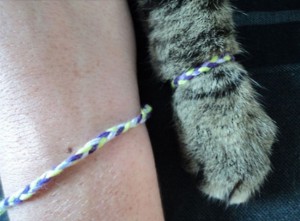
Do you love animals? Need extra cash? Perhaps you might want to consider investing your spare time in pet sitting. There are responsibilities that come along with owning a pet. People need vacations and like to travel and boarding their beloved animal can be expensive. If you are thinking about pet sitting, here are some pointers to help get you started!
Research:
You should do your homework ahead of time. Don’t just keep at the basic “dog” or “cat” Google search. Dig a little deeper. The more you know about the type of breed you are sitting, the better you will be able to adapt to certain situations and maintain its happiness.
Ask Questions:
Find out what is expected of you so that there are no letdowns. Certain pets have certain needs. You never want to walk into a pet-sitting job completely blindsided. Common questions you could ask:
– How much exercise is expected per day?
– Should I follow a specific feeding schedule?
– Are there any allergies I should know about?
Meet and Greet:
Arranging a mini meet and greet is important to assure that you are not afraid of the pet you are sitting. Go over any questions, introduce yourself to the pet, and make sure you and the owner are on the same page.
Communication is Key:
Before the owner takes off on any adventure, make sure you have a list of contact information in case of emergencies. You just never know what can happen and need to make sure you have all of your ground covered. Whether it be an emergency visit to the vet, unusual behavior, or a check in email here and there, make sure you have the information you need!
It’s important to have a good mindset before going into any caretaker responsibility. If a certain breed intimidates you, don’t be afraid to say no. Have fun with it and treat the pet as your own. Once you build a clientele, you could have a small business in the making!
Lisa Podwirny is the owner of Ketchum Mfg. Connect with her on Google+












 Extremely quick learners; the
Extremely quick learners; the 



 3. More Playtime
3. More Playtime